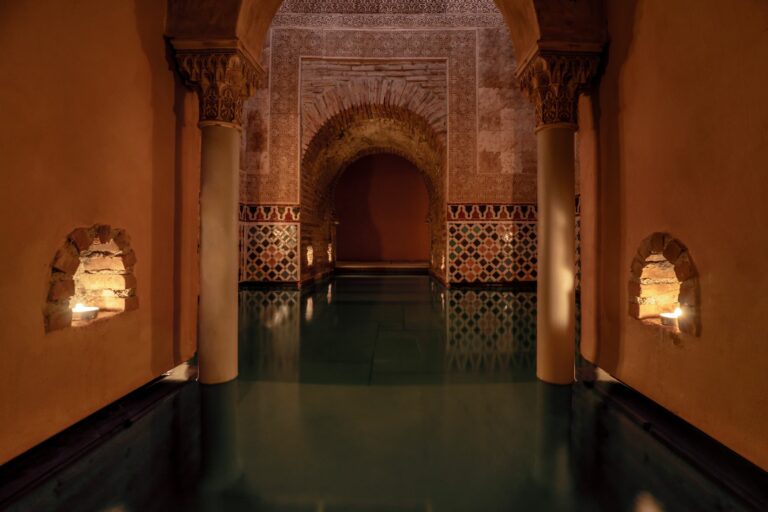Sabika Hill: The historic elevation that guards the Alhambra in Granada.
The Alhambra of Granada rises on Al-Sabika Hill, a name given by the Andalusians. This place holds a vital part of the city’s history and is steeped in legends and magic.
Walking along Sabika Hill means discovering a space where every corner surprises you. Its calm atmosphere, vibrant colors, and the sound of water make it truly unique.
Sabika not only supports the Alhambra of Granada. It also shelters the Churra neighborhood, which stretches down to the shaded banks of the Genil River.
Known as Granada’s red hill, Sabika seems destined to host the Alhambra. It embraces the Darro and Genil rivers and marks the last edge of the Sierra Nevada.
SABIKA AND ITS ORIGINS
The Nasrid Kingdom respected the old Roman roads and towns, expanding them and founding new settlements. Historians say that by the 9th century, some buildings were already being constructed on Sabika Hill.
These works eventually gave shape to the Alhambra of Granada. However, some researchers believe that structures existed here during Roman times and even earlier.

After the civil war of 1031, which ended the Caliphate of Córdoba, the provincial capital moved from Elvira to Granada. The Taifa Kingdom set its court in the Alcazaba Cadima, in the Albaicín neighborhood.
In the lower part of the Albaicín lived a large community, mostly Jewish. This area became the heart of Granada’s growth. Samuel ibn Nagrella, vizier of the Taifa Kingdom, led the reconstruction of abandoned buildings on Sabika and chose to build his palace there.
During the 12th century, Sabika offered shelter to Andalusian locals and to North African invaders alike. It played a key role in the conflicts brought by the waves of Almoravids and Almohads.



